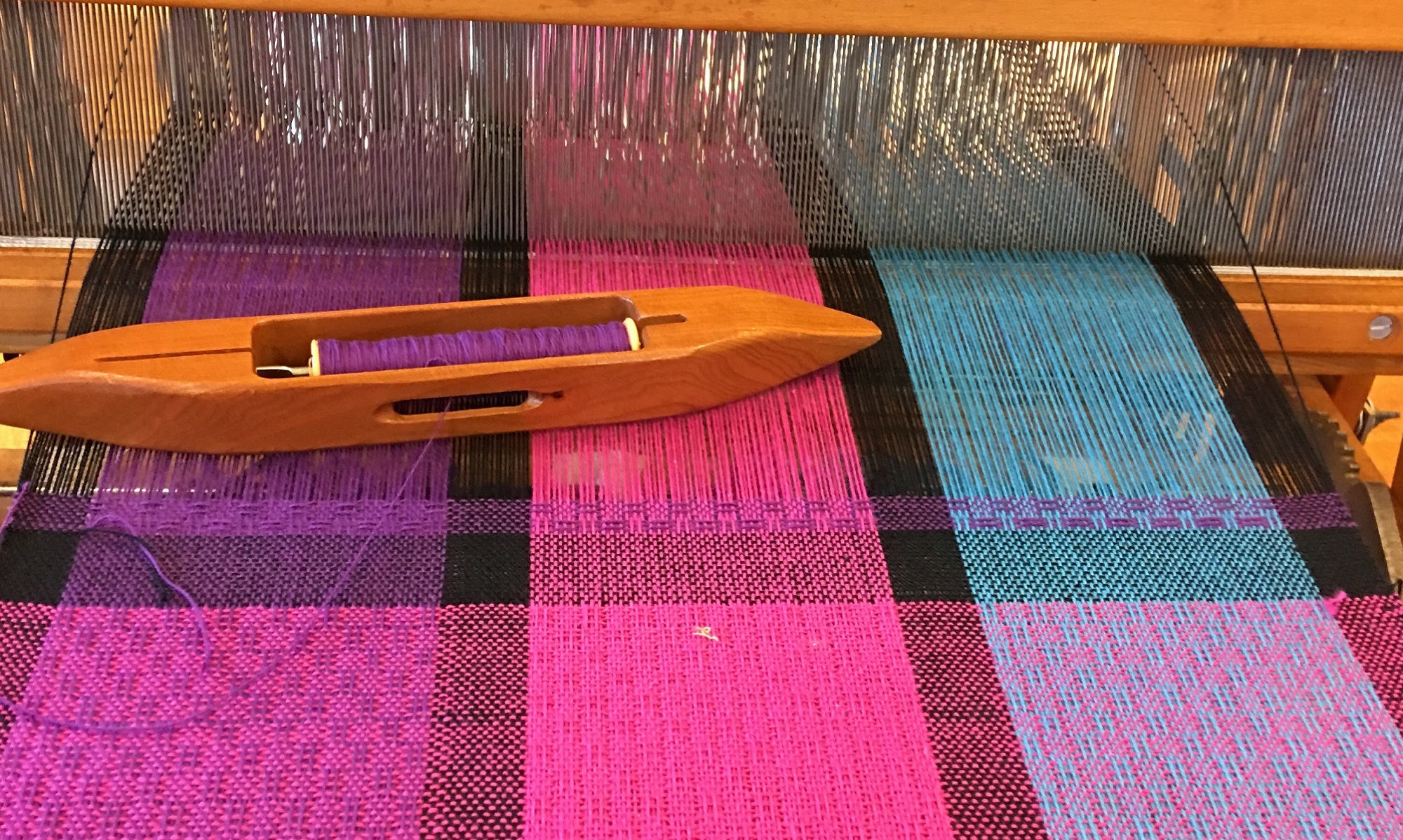 I recently took over one of the bigger bedrooms in the house as my studio. I got it sorted out enough today that I could wind a warp to start a project. What that means is that I am measuring and counting the warp threads (in this case undyed 8/2 ringspun cotton). I need 528 ends (strands of warp) that I will sett at 24 e.p.i. (there will be 24 strands in each inch of my warp). This project is dish towels which will be 22 inches wide on the loom. Even before beginning to wind the warp, I had to plan out my pattern to fit into 22 inches with the yarns that I chose to use. The pattern is a twill, and 8/2 cotton is good at 24 e.p.i. for a twill pattern.
I recently took over one of the bigger bedrooms in the house as my studio. I got it sorted out enough today that I could wind a warp to start a project. What that means is that I am measuring and counting the warp threads (in this case undyed 8/2 ringspun cotton). I need 528 ends (strands of warp) that I will sett at 24 e.p.i. (there will be 24 strands in each inch of my warp). This project is dish towels which will be 22 inches wide on the loom. Even before beginning to wind the warp, I had to plan out my pattern to fit into 22 inches with the yarns that I chose to use. The pattern is a twill, and 8/2 cotton is good at 24 e.p.i. for a twill pattern.
I chose a pattern from Marguerite Porter Davison’s book A Handweaver’s Pattern Book on page 44 titled “Caroline Halvorsen’s No. 30”. This is a classic book of 4 shaft patterns for weaving, that was written in 1944. There are 4 variations of the pattern that I can treadle by changing what feet and treadles I use in sequence. My warp will make 4 towels, so each towel will be a different variation of the pattern. To make the 4 towels I need 4 yards of each strand. The pattern is a twill, and 8/2 cotton is good at 24 e.p.i. for a twill pattern. I want 22 inches wide on the loom, so my warp takes 2112 yards of yarn. This 8/2 cotton has 3360 yards in one pound of yarn, so I am using almost 2/3 of a pound of yarn.
These kind of calculations are necessary to know that you have enough of a given yarn to make the project (or to know how much to buy) and to know how much your project costs to make for pricing decisions, for inventory and for profit calculations.
I have a limited amount of the yarn that I chose for weft (the threads that I weave with), and wanted 4 towels as wide and as long as I could make them, but still trying to keep the weaving width a multiple of 2 inches with 24 ends per inch. I have a loom with a warp beam that has 2 inch sections, so to make warping easier, I try to keep my projects a multiple of 2 inches. I changed the draft in the book a little to accommodate this by increasing the number of ends in the first and last repeat of the pattern. There are lots of decisions to make before you even start to wind your warp.
I have been thinking about the project for a while, but actually sat down with a calculator, graph paper, my spreadsheet and weaving software this morning to pull it all together.
This post shows a picture of about half of my measured threads on the warping board. (A warping board is a device used to measure your yarn so that each strand is exactly the same length and keep the strands organized so that you can then take it to the loom to “dress” the loom.)
So, off to wind more warp and perhaps get it wound onto the loom today. Tomorrow, I will need to thread the strands through the heddles on the loom in the order required to make my pattern.




